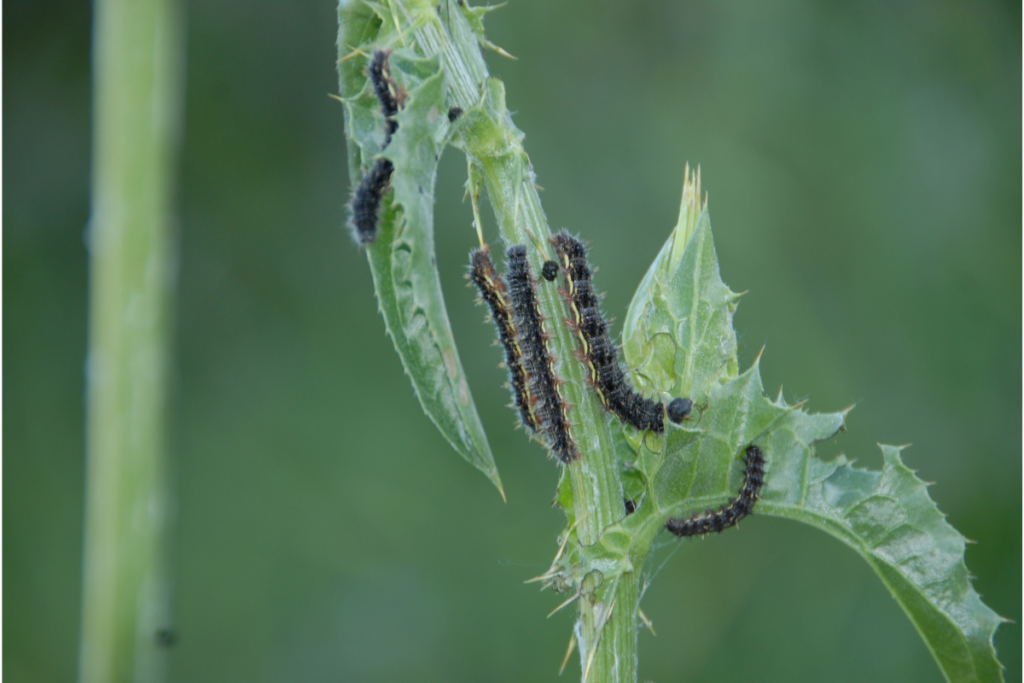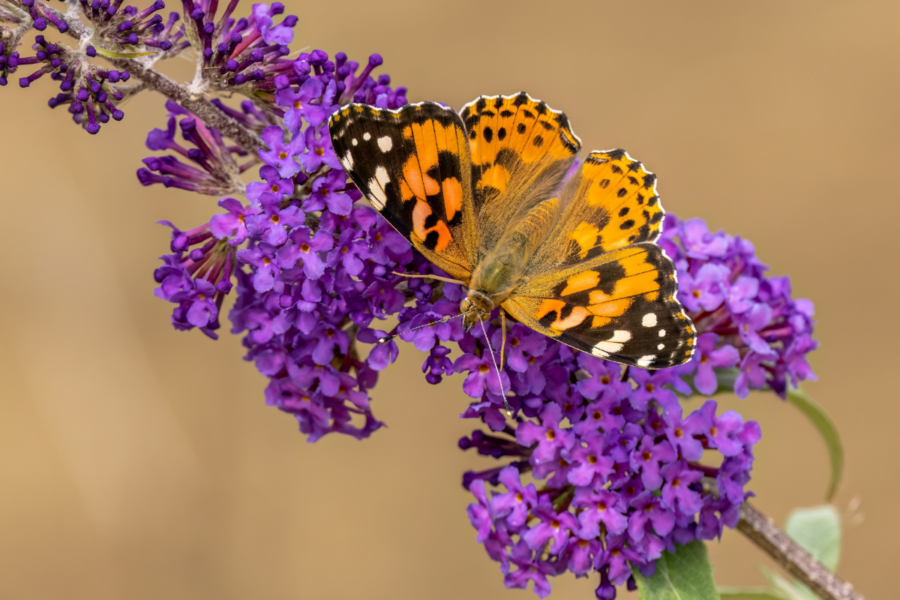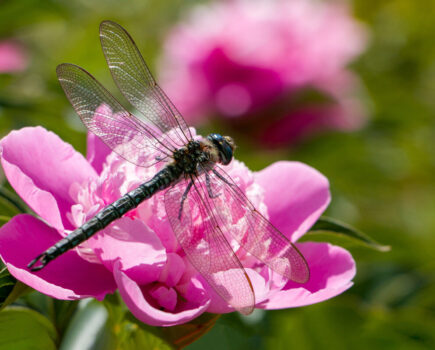Olivia Watts from the Field Studies Council introduces one of the marvellous insects that makes a huge journey to the UK every year.
From the common blue to the brimstone, July is a wonderful month to see a variety of butterflies fluttering around the garden. Many species stay local throughout the year as the climate is right and everything they need is available from neighbouring gardens. However, one species – the painted lady – makes a much more arduous journey in order to visit the UK.
What a beauty
The painted lady (Vanessa cardui) is a vibrant butterfly with a wingspan of approximately 5.5cm (2in), boasting a bold mix of colours. With its wings open, you’ll see orange patches surrounded with black markings and white spots.
With closed wings, you’ll see a mixture of markings composed of black, white and browny-orange tones. They also have a slight hint of red on their forewing, and some eyespots on their hind wing.
Like all butterflies, the painted lady undergoes a four-stage life cycle: starting life as an egg, hatching into a caterpillar, transforming into a pupa, and finally emerging as an adult butterfly. Unlike some species that complete this cycle once a year, the painted lady will complete it several times, producing multiple broods in different locations.

Magnificent migrations
Every year the painted lady embarks on an incredible migration, covering over 5000 miles! Starting from the desert fringes of North Africa, this species journeys north through mainland Europe, eventually reaching Britain and Ireland. However, this epic journey is not completed by a single butterfly. Instead, each generation travels part of the way, with new adults emerging, breeding, and continuing northward.
Arriving in the UK from March onwards, these butterflies are most abundant during the summer months. As a common and widespread garden visitor, the painted lady is definitely one to watch out for.
However, their numbers can vary greatly each year, with ‘painted lady years’ occurring about once a decade. During these events, a significant influx of butterflies migrate to the UK and the most recent painted lady years were in 2009 and 2019, with an estimated 11 million butterflies arriving in the UK in 2009 alone!
These beautiful butterflies do not stay through the winter in the UK. Instead, they set off in autumn to make the massive journey back south to warmer climates, ensuring the continuation of their remarkable migratory cycle for years to come.
Frequently Asked Questions
Q. What plants will the painted lady feed on?
A. As a caterpillar they feed on a wide range of plants, including thistles, mallows, common nettles and viper’s bugloss. As an adult butterfly, they can be seen nectaring on a wide range of flowers, including thistles, brambles, buddleja, knapweeds and clover.
Q. How long do the butterflies live for?
A. The lifespan of an adult butterfly typically ranges from 2 – 4 weeks.
Q. I’ve seen one in my garden, should I record my sighting?
A. Absolutely! Recording sightings of these butterflies, along with other wildlife, helps track their distribution and monitor changes over time. You can submit your records to iRecord or iNaturalist.
- iRecord: A website and app where you can log your wildlife sightings.
- iNaturalist: An app that allows you to take a photo of the butterfly (or any wildlife), provides an identification suggestion, and then submits the data.

Interested to learn more about butterflies?
You can find out more about these fascinating insects with guides and courses provided by the Field Studies Council: www.field-studies-council.org
Find more tips, advice and articles like this at the Amateur Gardening website. Subscribe to Amateur Gardening magazine now





